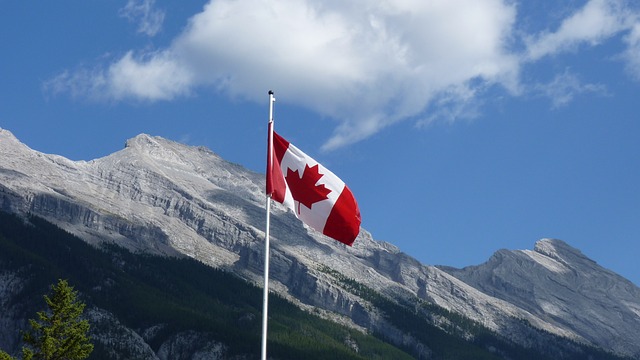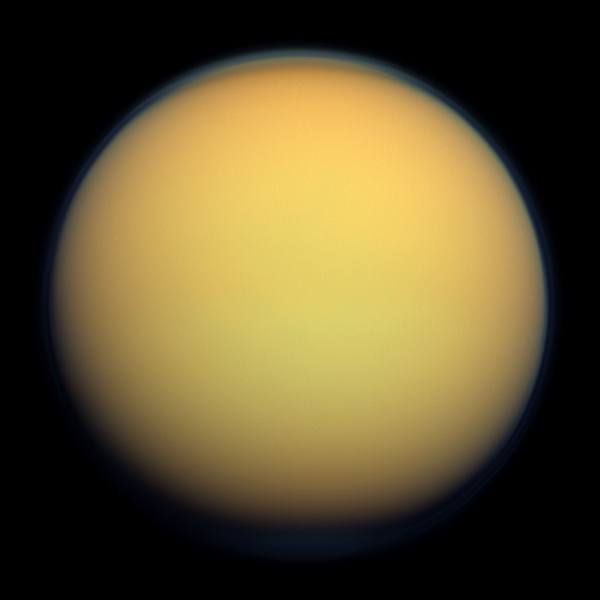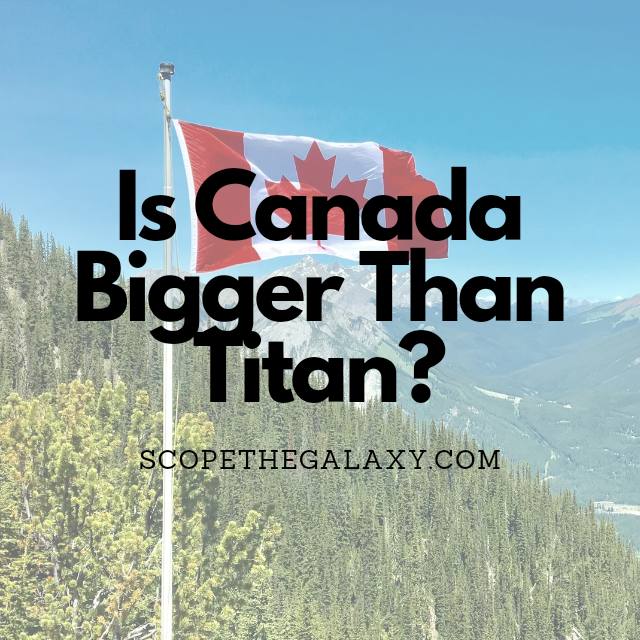*This post may contain affiliate links. This means we may make a commission if you purchase an item using one of our links*
Canada is the second largest country on Earth, and Titan is the second largest moon in our Solar System. Comparing their sizes can be a challenge because Canada is a relatively flat piece of land, while Titan possesses a spherical shape. However, we can compare some key statistics of the two in order to determine their size relative to one another.
Canada has a surface area of 9.98 million sq. kilometers and a volume of 349.46 mllion cubic kilometers while Titan is a spherical entity with a surface area of 83 million sq. kilometers and a volume of 71.6 billion cubic kilometers. It only makes sense that this moon would be bigger as it is spherical whilst Canada is a flat land mass.
Continue reading to discover what makes both bodies as big as they are, unearth the geographical composition of the two and learn some fascinating facts about their history and makeup below.
How Big Is Canada?
Table of Contents

Canada is one of the world’s largest countries, second only to the vast expanse of Russia. Still, with a population of just over 38 million, it remains one of the least densely populated countries, with more than 10 million people.
Canada has a total area of 9,984,670 sq. km, which encompasses its land mass and vast stretches of water. This country possesses an estimated 31,752 lakes, giving it the greatest number of lakes of any country in the world – they account for 9% of the country’s total surface area.
Without these, Canada would be smaller than both China and the US, possessing a land area of “just” 9,093,510 sq. km.
Canada has a width of 5,514km between its most extreme easterly point of Cape Spear across to the Yukon and Alaska boundaries. Its height – from Cape Columbia to Ontario – is 4,634km at its peak. And it has the longest coastline in the world, stretching over 240,000km. Canada is so big that the UK could fit inside it over 40 times.
Canada’s border with the USA is the longest in the world, with a length of 8,891km; this also holds the title for the longest undefended boundary in the world. In addition, the sheer size of Canada means that it borders three oceans: the Atlantic, the Pacific, and the Arctic. And from east to west, the country covers six time zones.
Roughly 24% of Canada’s total land area comprises mountains, with the tallest peak being Mount Logan which reaches a height of 5,959 meters. Still, the vast number of lakes reduces the average thickness of Earth’s crust. Scientists estimate that the thinnest strips of crust are around 29 km thick. But the average thickness is between 30 and 40 km.
If we take the average thickness to be 35 km and multiply it by the total surface area, we can calculate the estimated volume of Canada to be around 349,463,450 cubic km.
Canada’s diverse physical geography encompasses towering mountains, rolling plains, and expansive lakes. The Canadian Shield is a northern hilly region of swamps and lakes that contains some of the oldest rocks in the world. Further north, ice and snow dominate the landscape in the glacial Arctic regions.
How Big Is The Moon Titan?

Titan is the largest of Saturn’s moons and the second largest satellite in our solar system (following Jupiter’s moon Ganymede). It is the only moon in the Milky Way that has clouds and a planet-like atmosphere.
Titan has a diameter of 5,150 km and a surface area of 83,000,000 sq. km. While its width falls short of Canada’s grand expanse, Titan’s surface area is far more vast thanks to its spherical body (compared to Canada’s flat land mass). This surface area gives Titan an impressive volume of 71,600,000,000 cubic km.
This moon is so fascinating to scientists that they will launch the $1 billion drone “Dragonfly” to explore its surface. Titan has a thick atmosphere; because of this, the moon experiences a methane cycle of evaporation and condensation that creates rain, clouds, seas, and rivers. Other than Earth, Titan is the only body in the Milky Way that shows clear evidence of stable bodies of surface liquids.
The moon’s surface is one of the most Earth-like places in the Milky Way, though there are some vast differences. Firstly, the temperature is far, far colder, with an average surface temperature of −179.5 °C. And Titan’s gravity is only 14% of the Earth’s gravity, which means that a person weighing 100 kg on Earth will only weigh 14 kg on Titan.
Dutch astronomer Christiaan Huygens first discovered the moon in 1655 and named it Saturni Luna (Latin for “Saturn’s moon). It was in 1847 that English astronomer John Herschel suggested that the moon be renamed Titan from Greek mythology.
Scientists aren’t entirely sure about Titan’s origins but get some clues from its atmosphere. Instruments measuring the isotopes discovered that the ratio of Titan’s nitrogen isotope most closely resembles comets from the Oort Cloud – billions of icy bodies which orbit the Sun from a distance of 5,000 to 100,000 astronomical units.
This nitrogen ratio suggests that the moon was created from the same disc of dust and gas that formed the Sun.
Titan orbits at a distance of roughly 1.2 million kilometers from Saturn, a planet that is approximately 1.4 billion kilometers from the Sun. This vast distance means that sunlight takes around 80 minutes to reach Titan (compared to around eight minutes on Earth), and the light is 100 times fainter on this moon than we experience on Earth.
Conclusion
If you were to place Titan in front of Canada, you would see that the moon’s height is greater than this northern country, but Canada’s width extends beyond the width of Titan. Still, if we compare these two bodies’ volume or surface area, we see that Titan dwarfs Canada, thanks to its three-dimensional spherical shape.
References
How big is Canada? Fun facts about its size | Canadian Affair
Canada – Relief | Britannica
In-Depth | Titan – NASA Solar System Exploration
Why Titan is the best place for Humans in the Solar System beyond Earth | SpaceTech Asia

